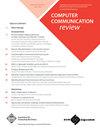延迟很重要
IF 2.8
4区 计算机科学
Q3 COMPUTER SCIENCE, INFORMATION SYSTEMS
引用次数: 5
摘要
一些新兴的交互式应用程序要求完全释放极低的延迟,边缘计算通常被认为是一个关键的推动者,因为它减少了延迟。本文展示了一个大规模的端到端测量活动的结果,该活动关注于任务卸载场景,表明仅将计算移动到更靠近最终用户的位置可能是不够的。实际上,与现代网络相关的复杂性,无论是在访问还是在核心,协议在栈的不同级别上的行为,以及数据中心中使用的编排平台,都隐藏了一组陷阱,这些陷阱可能会抵消低传播延迟带来的好处。简而言之,我们强调如何确保对延迟敏感的应用程序具有良好的QoS,这绝对是一个多维问题,需要处理大量的定制和合作,以从底层网络中获得最佳效果。本文章由计算机程序翻译,如有差异,请以英文原文为准。
When latency matters
Several emerging classes of interactive applications are demanding for extremely low-latency to be fully unleashed, with edge computing generally regarded as a key enabler thanks to reduced delays. This paper presents the outcome of a large-scale end-to-end measurement campaign focusing on task-offloading scenarios, showing that moving the computation closer to the end-users, alone, may turn out not to be enough. Indeed, the complexity associated with modern networks, both at the access and in the core, the behavior of the protocols at different levels of the stack, as well as the orchestration platforms used in data-centers hide a set of pitfalls potentially reverting the benefits introduced by low propagation delays. In short, we highlight how ensuring good QoS to latency-sensitive applications is definitely a multi-dimensional problem, requiring to cope with a great deal of customization and cooperation to get the best from the underlying network.
求助全文
通过发布文献求助,成功后即可免费获取论文全文。
去求助
来源期刊

ACM Sigcomm Computer Communication Review
工程技术-计算机:信息系统
CiteScore
6.90
自引率
3.60%
发文量
20
审稿时长
4-8 weeks
期刊介绍:
Computer Communication Review (CCR) is an online publication of the ACM Special Interest Group on Data Communication (SIGCOMM) and publishes articles on topics within the SIG''s field of interest. Technical papers accepted to CCR typically report on practical advances or the practical applications of theoretical advances. CCR serves as a forum for interesting and novel ideas at an early stage in their development. The focus is on timely dissemination of new ideas that may help trigger additional investigations. While the innovation and timeliness are the major criteria for its acceptance, technical robustness and readability will also be considered in the review process. We particularly encourage papers with early evaluation or feasibility studies.
 求助内容:
求助内容: 应助结果提醒方式:
应助结果提醒方式:


